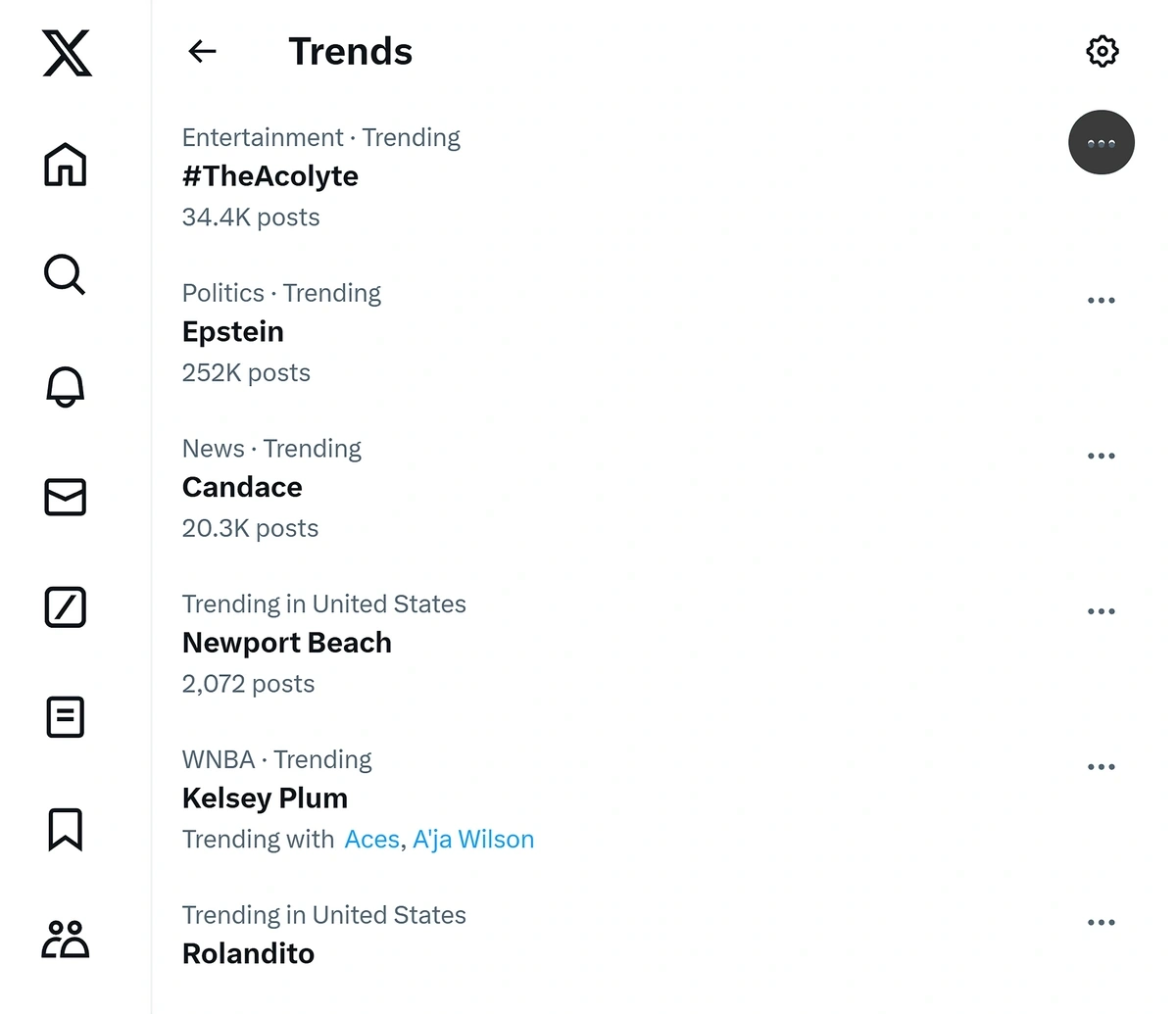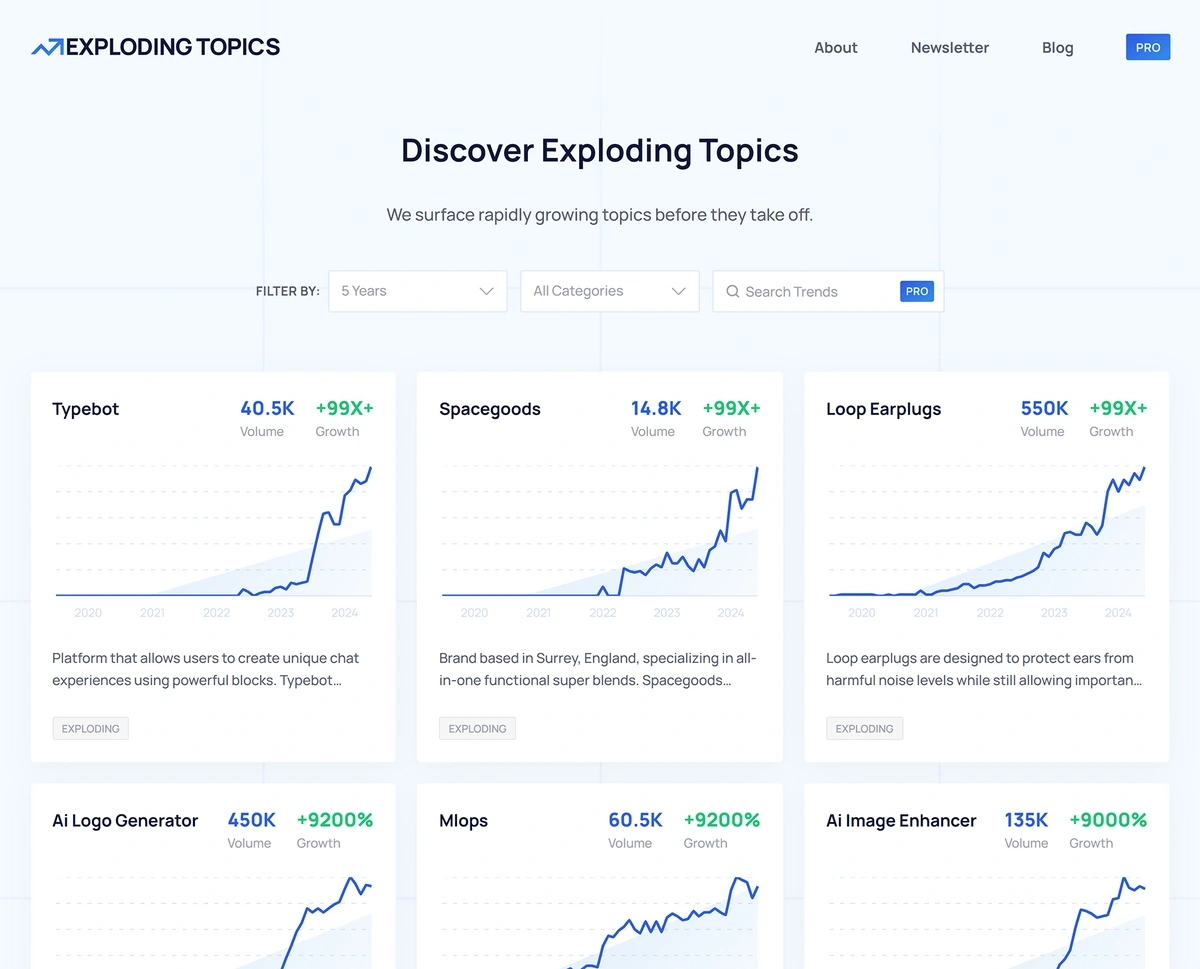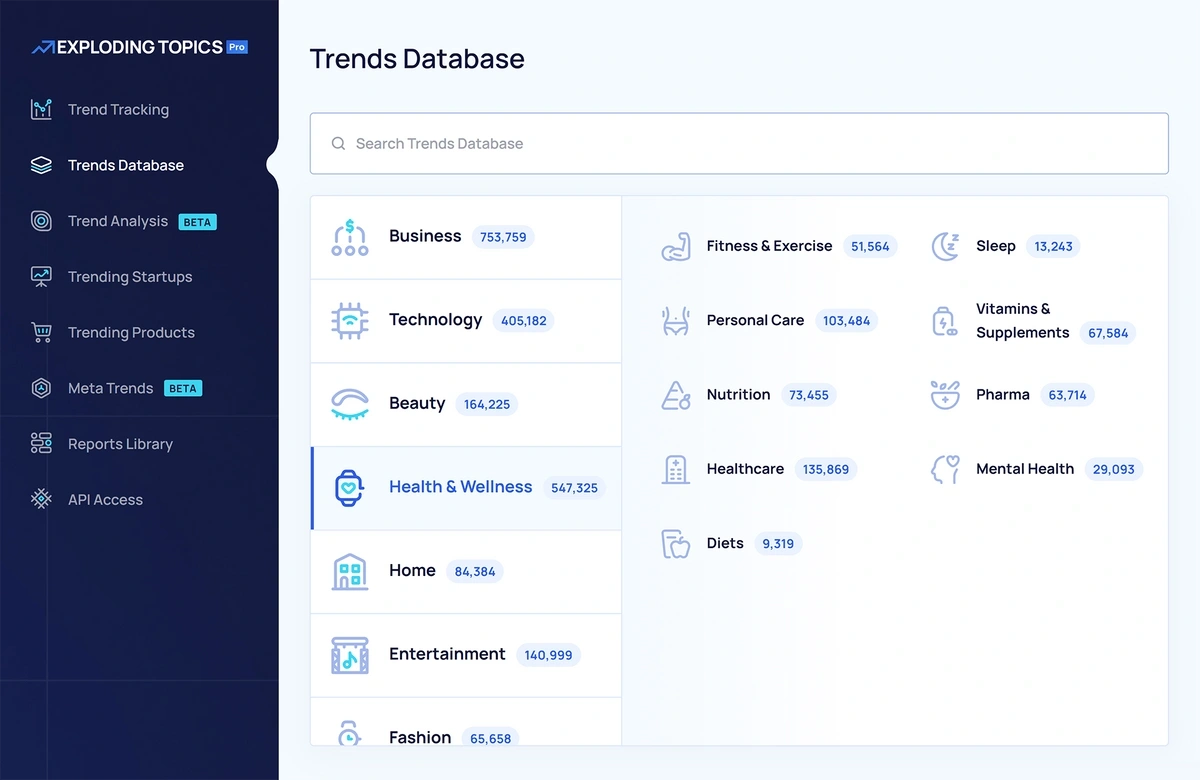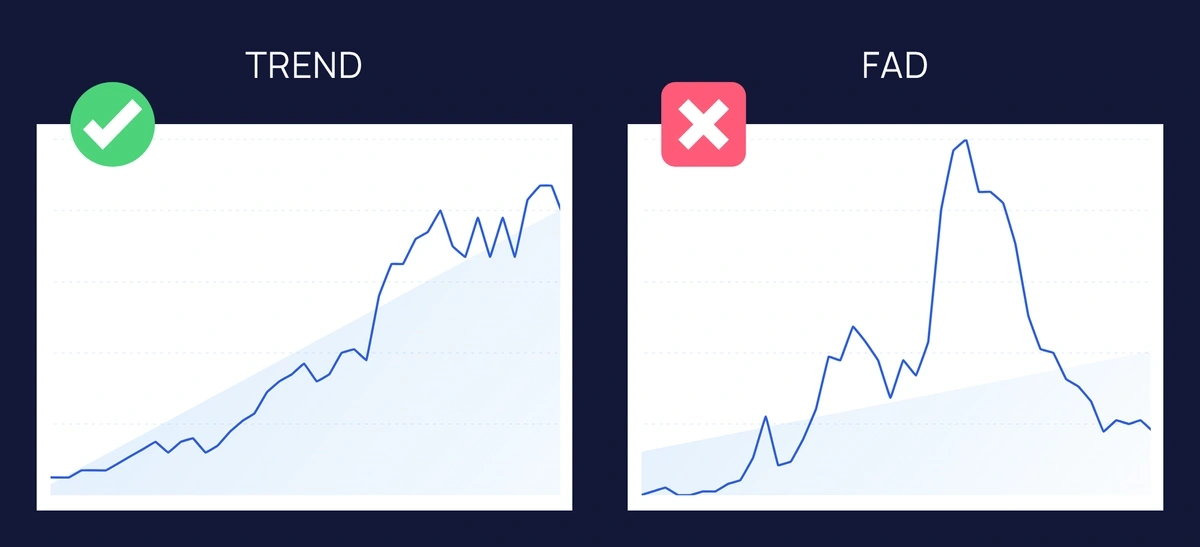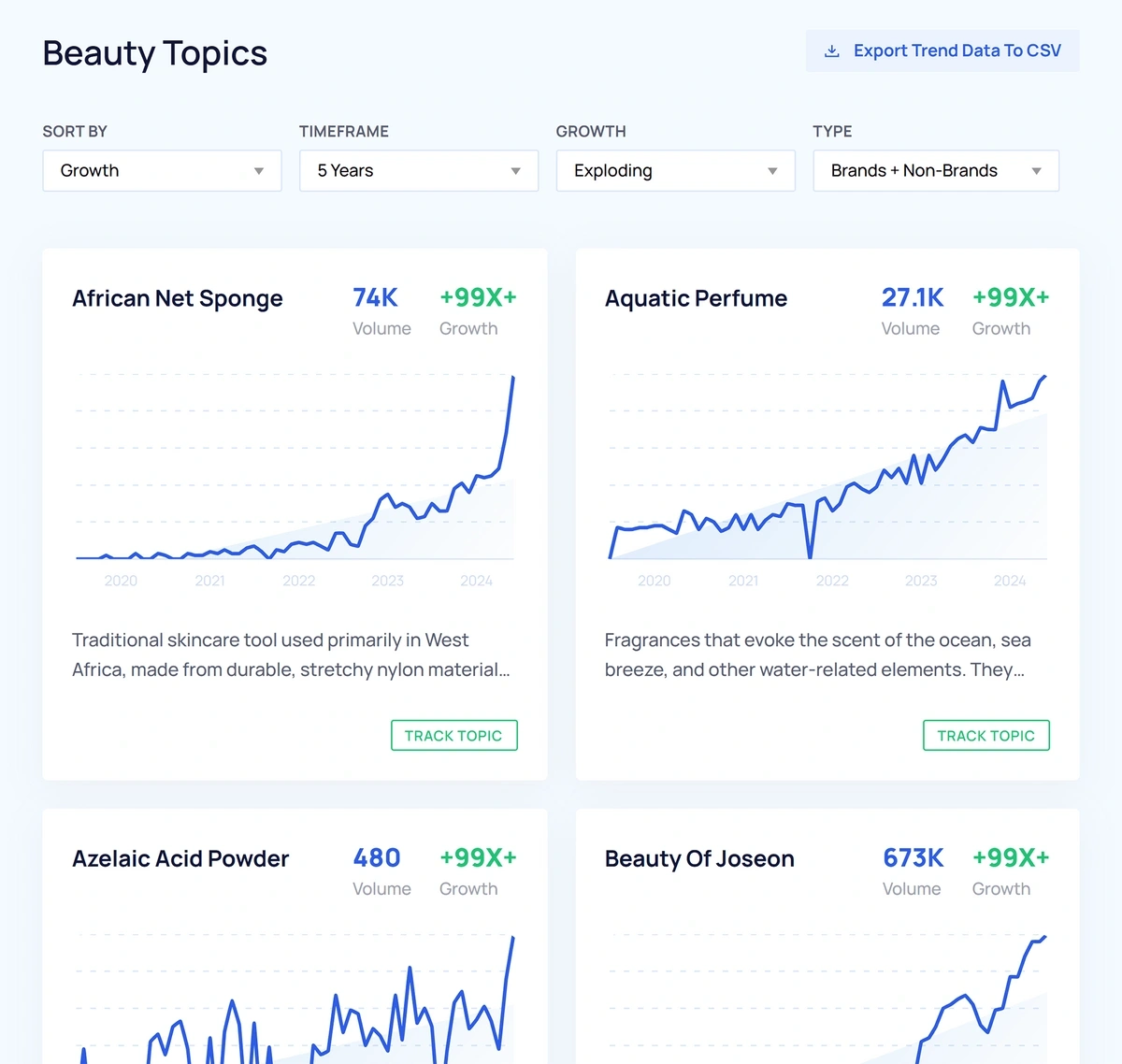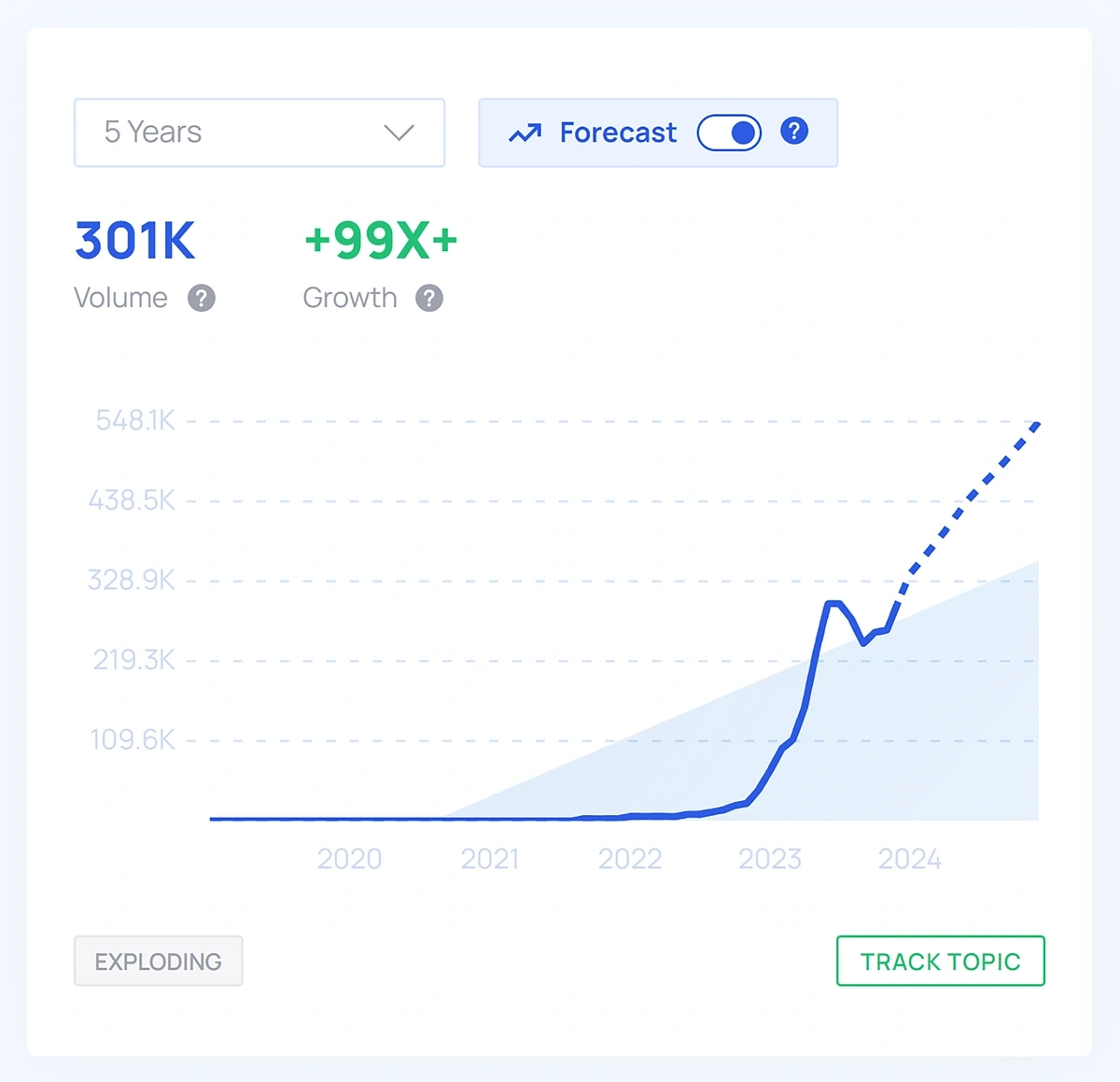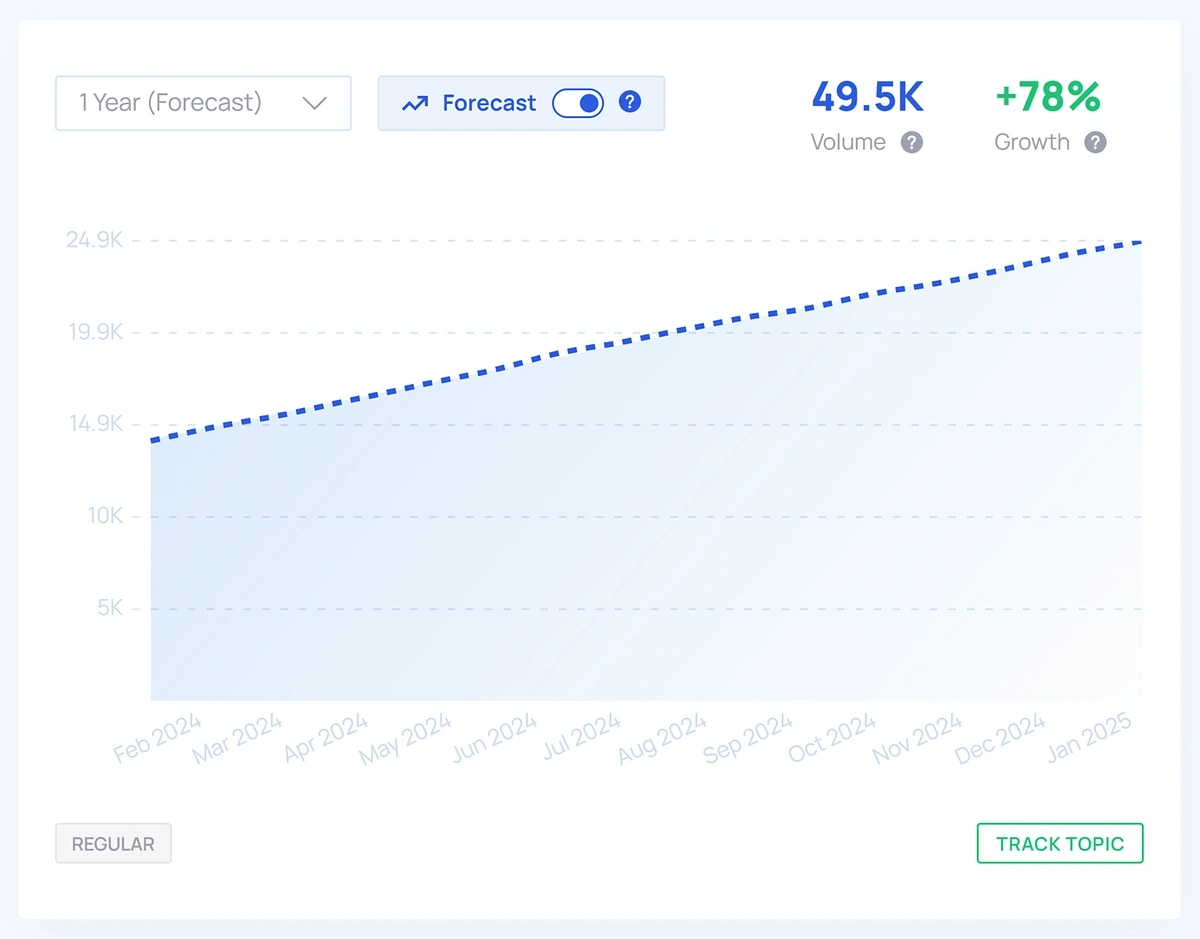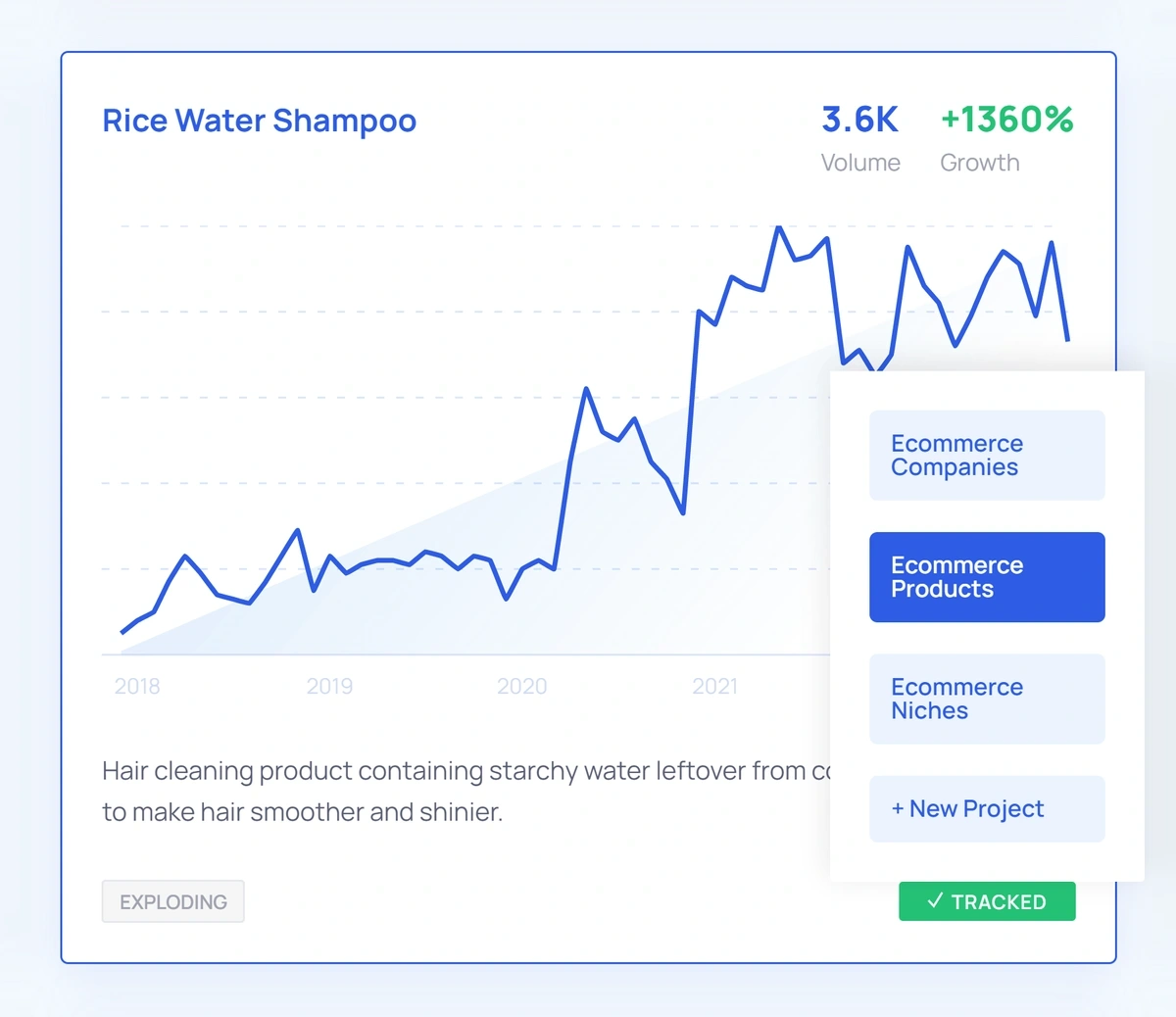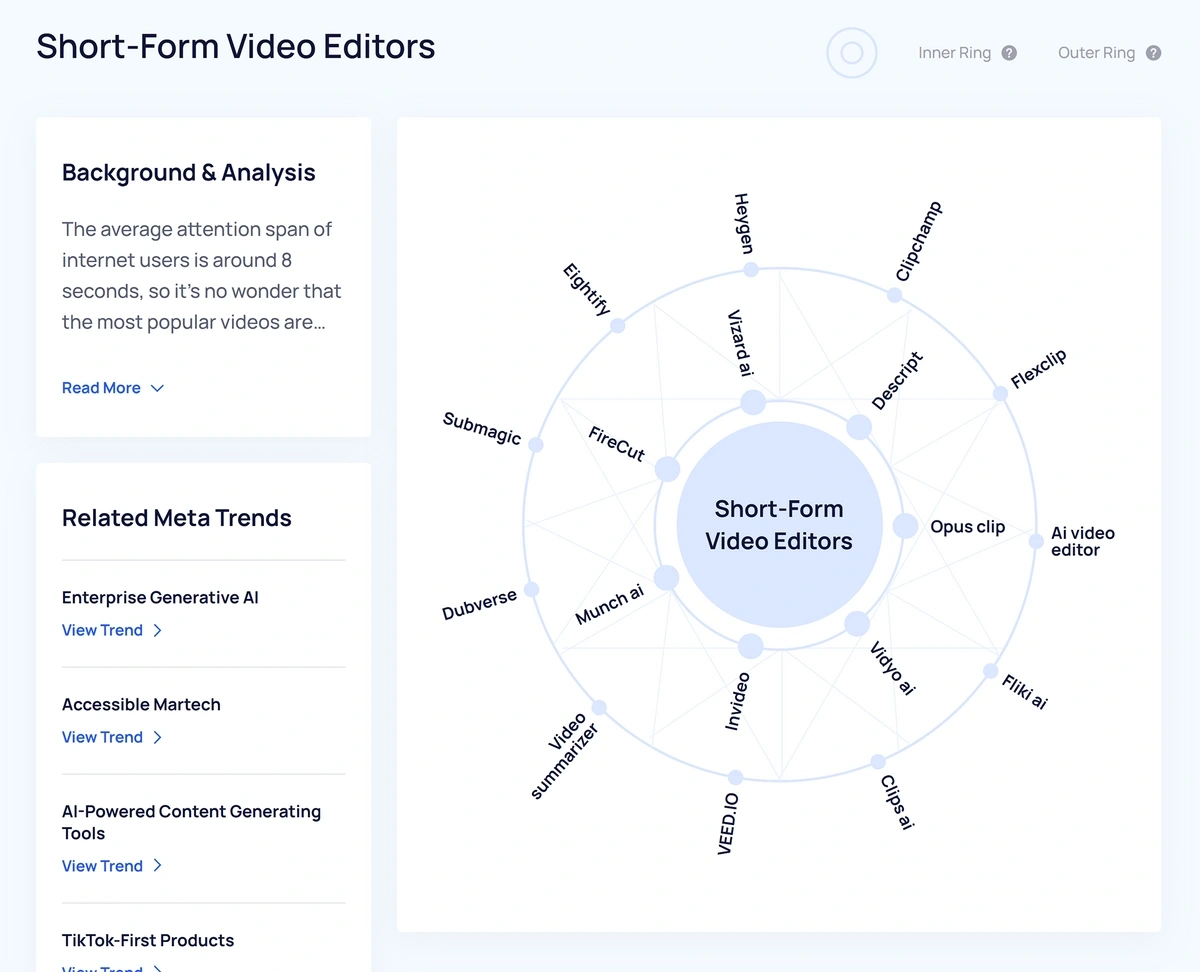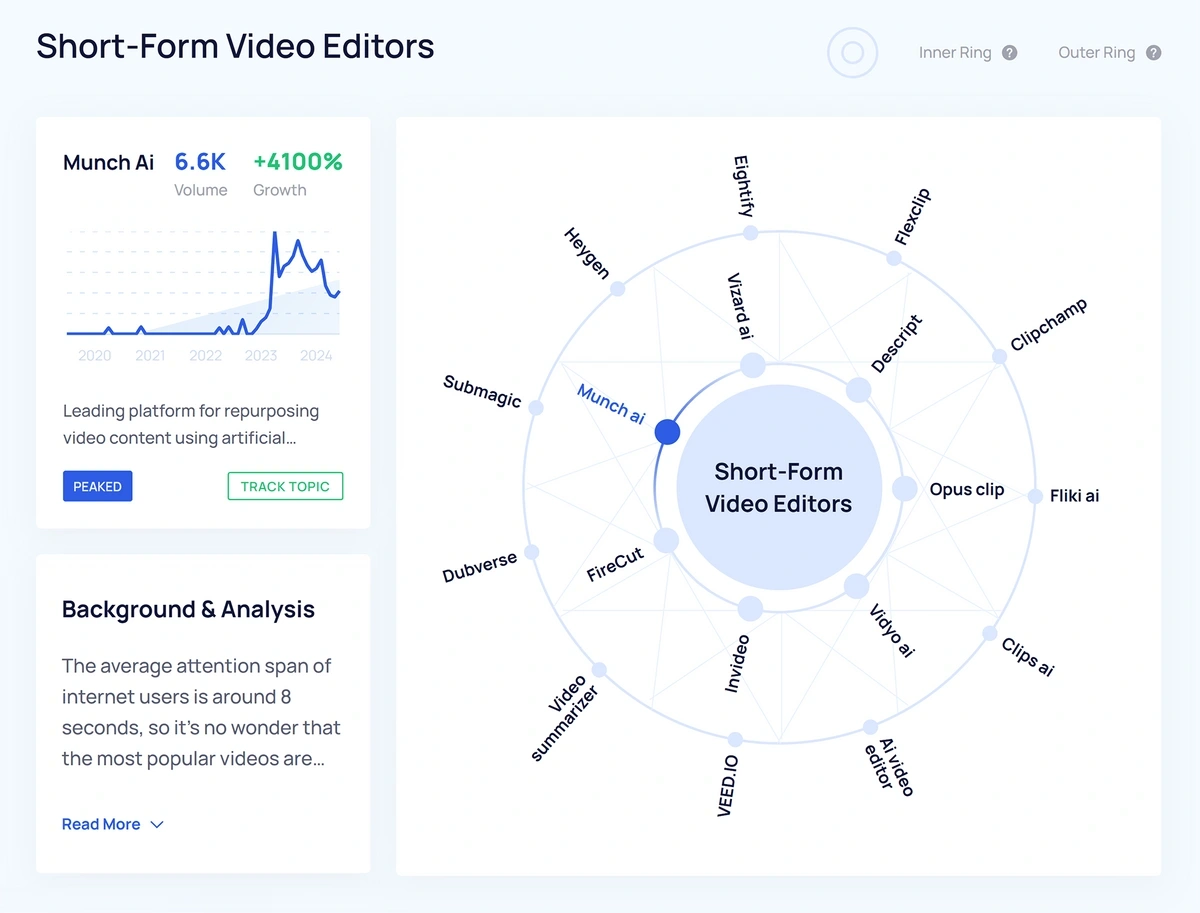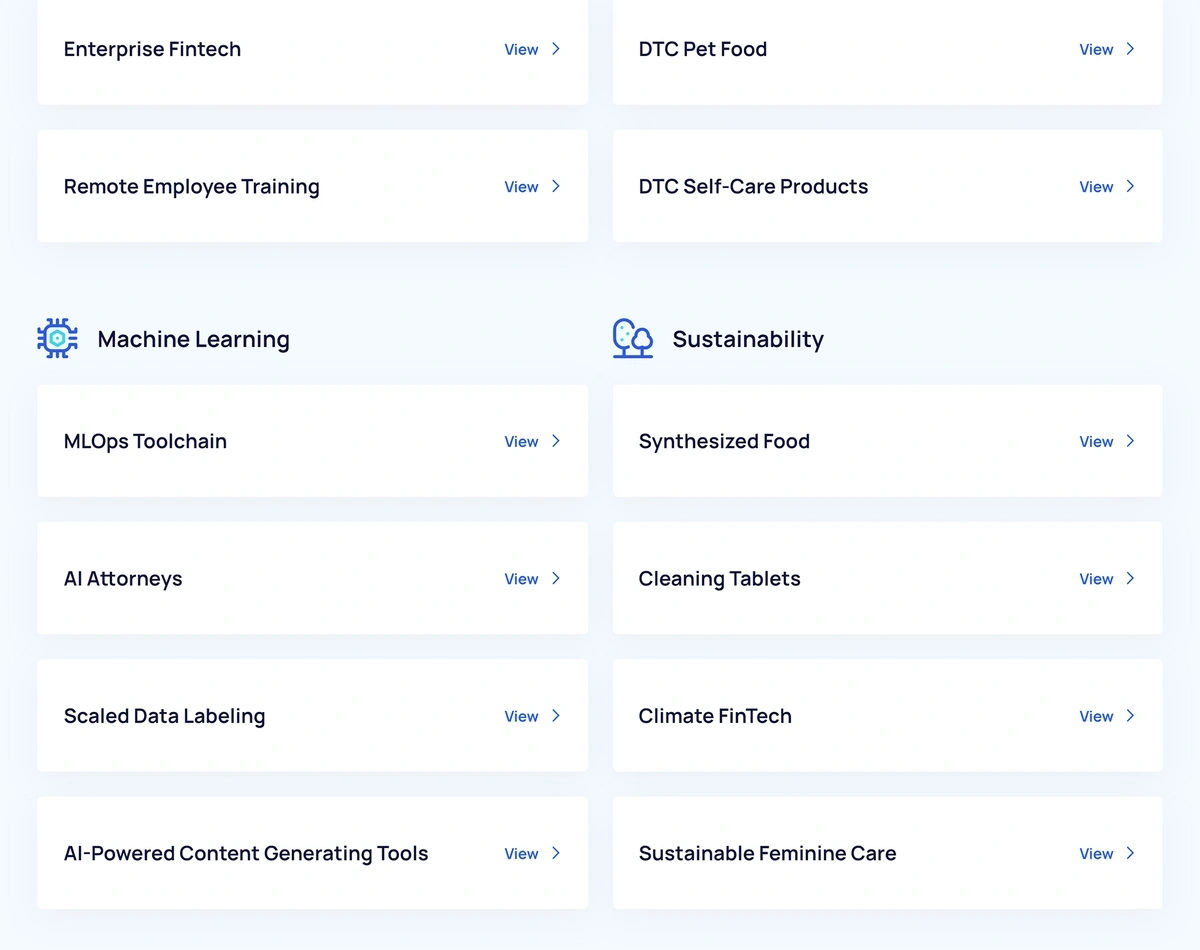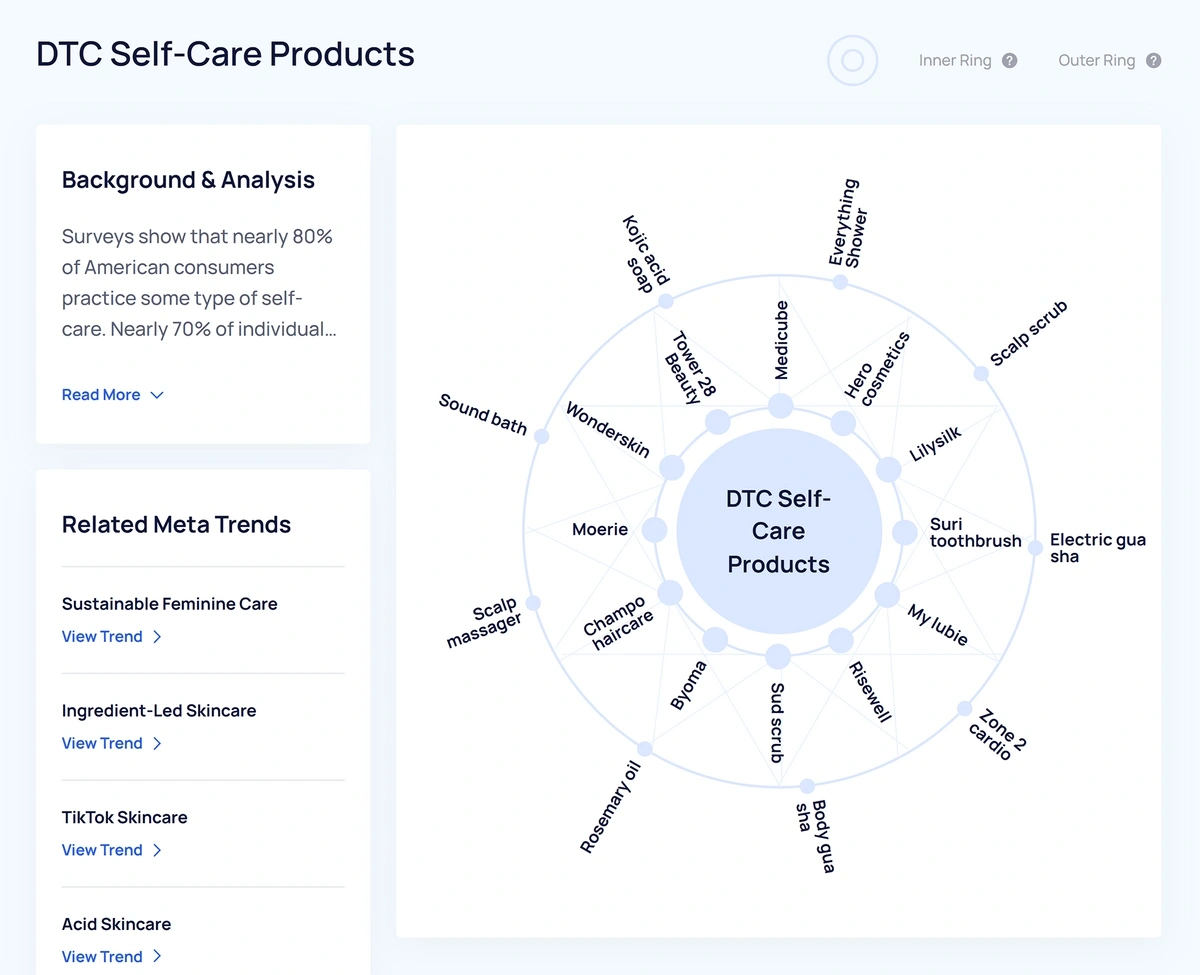
Trend Forecasting in 2025: Step-by-Step Guide
If you know what consumers will want to purchase in the next six or twelve months, you can tailor your products to meet that demand.
But how do you actually predict consumer trends and demand?
Rather than guessing, you can use trend forecasting.
Below, we’ll lay out a step-by-step guide to trend forecasting so that your company can launch products and services that align with future consumer demand.
What is Trend Forecasting?
Trend forecasting is a process that uses historical consumer trend data and current market trend data to help businesses estimate consumer demand.
Rather than looking at historical data alone, forecasting is a prediction of how the trend will grow or decline.
Trend forecasting is used in many industries, from fashion and beauty to consumer electronics and food and drink.
Why is Trend Forecasting Important?
Trend forecasting is important because it helps businesses develop products that grow alongside future consumer demand.
The benefit is that creating products consumers want will help you sell more and reduce marketing costs, leading to higher profitability. So if it takes twelve months to develop a particular product, knowing what consumers will want in twelve months and tailoring the product accordingly will make the product launch more successful.
For example, if a fashion designer knows what colors and patterns will be on trend for the coming season, they can optimize the inventory to meet that demand, making the fashion brand more profitable.
How to Forecast Trends
You already know that the trend forecasting process uses historical consumer data and current market data to predict demand, but which historical and current market data should you use?
And how do you take that data and turn it into actionable insights?
We’ll answer both of these questions in the step-by-step process below so that you can accurately forecast the next big trends.
Step #1: Identify Popular Topics
The first step to trend forecasting is finding under-the-radar trends. So instead of identifying what’s hot right now, you want to find budding topics that show strong growth potential, yet haven’t peaked.
This process is deceptively tricky because if a topic is too easy to find, it might have already peaked (or you’re too late to develop and launch a product that meets that trend).
For example, if you’re using social media to find trending topics, you'll be looking at trends that are hot right now.
Trending topics on social media tend to be relatively mainstream already.
So how do you find under-the-radar topics that are about to trend?
Google Trends does not do this. It only shows existing trends.
We couldn’t find a suitable solution for forecasting, so we created a tool to solve this problem.
Exploding Topics surfaces early trends that are steadily gaining traction and predicts what will happen next.
How?
Our AI scans millions of web pages (like Google, Amazon, Reddit, forums, etc.) and various media channels (like YouTube and Spotify) to find new topics gaining traction.
Next, we measure each topic’s Google Search volume trend to confirm that it’s steadily increasing in popularity.
Finally, a human analyst reviews each flagged topic for business relevancy before adding it to the Trends Database.
While we reserve premium topics for Exploding Topics Pro users, there are thousands of promising trends you can discover for free right now.
In total, the Trends Database currently has 1.1M+ vetted trends, and you can sort it by category (e.g., fashion, fitness, ecommerce, pets, etc.).
Build a winning strategy
Get a complete view of your competitors to anticipate trends and lead your market
Step #2: Validate Popular Topics With Data
AI and machine learning are great for surfacing a comprehensive list of popular topics.
But just because a topic is currently growing, that doesn't mean it will be relevant over the next six, twelve, or eighteen months.
For businesses making product development decisions, it's important to distinguish fads (popular topics that quickly die out) from trends (popular topics that will continue to grow in popularity).
So how do you do that?
The best way to distinguish fads from trends is by analyzing their growth patterns.
Fads tend to have quick, spiky growth and rapid decline. Important trends tend to have steady compounding growth over an extended timeline.
So which historical trend data should you analyze?
We use Google data to analyze and qualify trends for the Exploding Topics database.
Here's why:
- Google search is reliable as it's quantitative data pulled directly from Google.
- Google search is a good estimator of general topic popularity globally, rather than a particular group (after all, nearly everyone uses Google). This also minimizes bias, as pulling data from a specific group can skew data.
Looking at the Exploding Topics trends database, you'll see a graph of each topic's Google search volume growth. If you only want to view trends showing significant compounding growth over a specific time period, you can filter by "Exploding."
You'll also notice that Exploding Topics allows you to use our "Trend Forecasting" feature to project growth into the future.
There are two main types of trend forecasting:
- Long-term forecasting: Also referred to as macro trends, long-term forecasting predicts more permanent trends that will be relevant for the coming years or even decades.
- Short-term forecasting: Also referred to as seasonal trends, short-term forecasting predicts trends that will be relevant in the coming months. However, short-term forecasting generally doesn't predict beyond a couple of years.
So if you're doing short-term forecasting, you can use our forecasting model to see where the trend might go over the next year.
Whereas if you're doing long-term forecasting, you might want to combine historical data over the last 5 years with our projection.
Once you find a promising topic, save it by clicking "Track Topic." Then you can add it to a Project or create a new Project.
All of your Projects live inside the Exploding Topics dashboard, making it easy to track each trend over time.
Step #3: Discover Related Topics and Meta Trends
Most trending topics are part of a larger industry movement.
For example, it's not a coincidence that Facebook, Twitter, and LinkedIn were founded within a five-year window.
They were all part of the broader meta trend – the rise of social media platforms.
So as a trend forecaster, it's important to research not only specific trending topics, but also broader meta trends.
Once you find a great meta trend, it's much easier to find other trending topics within that meta trend.
To make this easy, Exploding Topics offers a Meta Trends dashboard. You'll find meta trends on various topics, including sustainability, supply chain, artificial intelligence, B2B tools, DTC products, and more.
When you find an interesting meta trend, you can click on it to see:
- A description of that meta trend
- Trending topics (brands, products, keywords, etc.) related to that meta trend
- Other related meta trends
As you can see, this meta trend introduces you to another 15 related trending topics, like FireCut, Descript, Submagic, Clipchamp, and more.
You can also click on each topic for a description and its Google Search volume trend data.
As you find more trending topics, you can add them to your Projects by clicking “Track Topic.”
Step #4: Dive Deeper With More Detailed Trend Analysis
Now that you have a handful of promising trends in your Project dashboard, how do you decide which ones are worth pursuing?
Narrow it down by executing market trend analysis.
To analyze the market trend, look at consumer reviews, sales data, competitive intelligence data, and other trend reports to accurately forecast a trend's market demand.
If you're not sure how to find this data, here are some methods:
- Consumer Reviews: If you're researching a new product idea, check Amazon for reviews. You can also use a tool like Reviews.ai to scan thousands of reviews and extract essential insights from the data.
- Sales Data: You can use a tool like Jungle Scout to find sales data (number of units sold and retail price) on many Amazon products. If you have a larger budget, you can use a tool like PriceFX to find more detailed pricing data.
- Competitive Intelligence Data: You can manually track your competitor's marketing messages, pricing, hiring trends, and reviews/ratings or use a tool like Klue or Crayon to do this for you.
- Trend Reports: General market size, compound annual growth rate (CAGR), and other tools are also helpful for assessing larger market trends. A quick Google search for the market industry is usually sufficient to surface this data from sources like Allied Market Research, Grand View Research, and others.
- Interviews: Qualitative data like customer interviews can give you a better understanding of why a particular trend is popular. You'll also be able to gather non-quantitative data like facial expressions and tone of voice to gauge an audience's sentiment toward a trend.
Using this data, you can create a more accurate forecast hypothesis to make better business decisions.
Step #5: Use a Forecasting Model
After thoroughly analyzing each trend, you can use a forecasting model to depict each trend's potential based on the data you've gathered.
Here are the four most common trend forecasting models:
- Time series model: This model assesses a trend based on its performance over time. So you'll look at trend data (like Google Search volume) to predict a trend's future growth.
- Econometric model: Economists use this model to predict supply and demand curves.
- Judgmental model: This model is great if historical data isn't available (i.e., if you're launching a new product without past sales data). So these forecasts are based on someone's judgment.
- The Delphi method: This model uses a panel of experts to form a decision. The idea is that these experts' collective knowledge is more powerful and less biased than a single individual's opinion.
While you can use this information to execute the trend forecasting process yourself, some companies prefer to hire an in-house trend forecaster, or they might simply hire a forecasting agency (like WGSN) to do it for them.
Trend Forecasting Tips
Here are a few tips to get the most out of the process outlined above.
Tip #1: Track Trends Regularly
Great trend forecasters are constantly hunting for new trends.
This is particularly important for seasonal trend forecasting, where trends may only last a few months.
Tip #2: Identify Meta Trends and Then Individual Topics
An excellent hack to speed up the trend discovery process is to first identify promising meta trends and then search for topics (brands, products, etc.) related to that meta trend.
Most venture capitalists use this strategy.
Rather than investing in companies at random, they'll identify a promising meta trend – like AI – and then invest in several companies within that meta trend.
To find promising meta trends, head to the Exploding Topics dashboard and navigate to the Meta Trends tab to see a curated list of growing meta trends.
You can then click on any meta trend to discover growing topics (brands, products, keywords, etc.) within that trend:
Tip #3: Use Quality Data to Support Your Predictions
While using high-quality data to formulate a hypothesis may seem obvious, it's a critical variable that immensely impacts your forecasts' accuracy.
So if you're using a tool to gather quantitative data, analyze the data quality by asking these questions:
- How recent is this data?
- How big was the data sample size?
- Is the sample biased?
- How credible are the sources providing this data?
Before creating Exploding Topics, we tested many trend discovery tools and found that most provided wildly different trend results.
This was a red flag because high-quality trend tools should show somewhat similar trending topics (e.g., the beauty market will only have a handful of truly significant trends in the coming months, so all trend discovery tools should surface those critical trends).
After digging into each trend discovery tool's trend prediction process, we found that most used sampled data or only a handful of different sources to formulate trend predictions. This contributed to the high variability in each tool's trend suggestions.
So we designed Exploding Topics to solve data quality issues.
Specifically, we pull all of the data directly from Google Search, which has two key benefits:
- All data Google Search volume data is pulled directly from Google, which is a fairly credible source.
- All data is based on all Google Search users across the globe rather than a sampled audience.
If you're analyzing qualitative data, here are a few things to consider:
- If it's an expert, how credible are they? Do they just have a title, or do they also have accomplishments/experience to back it up?
- If you're talking to customers, are they active users? Or is their feedback based on one experience with the product?
Tip #4: Track Your Hypotheses
The best way to get better at trend forecasting is to see how predictions play out over time.
So look at your past hypotheses and see which ones were accurate. You can then audit your forecasting methods and strategies to determine which data sources gave you the best information.
Then, use those data sources more frequently when creating future trend forecasts.
Start the Trend Forecasting Process Today
Accurately forecasting trends and tailoring your product inventory to meet product demand can be the difference between making or losing millions of dollars.
To start the trend forecasting process, you can log into the free Exploding Topics Trends Database now and discover promising, under-the-radar trends.
If you want to unlock premium trends, meta trends, and access other exclusive trend forecasting features, you can try Exploding Topics Pro.
Stop Guessing, Start Growing 🚀
Use real-time topic data to create content that resonates and brings results.
Exploding Topics is owned by Semrush. Our mission is to provide accurate data and expert insights on emerging trends. Unless otherwise noted, this page’s content was written by either an employee or a paid contractor of Semrush Inc.
Share
Newsletter Signup
By clicking “Subscribe” you agree to Semrush Privacy Policy and consent to Semrush using your contact data for newsletter purposes
Written By


Josh is the Co-Founder and CTO of Exploding Topics. Josh has led Exploding Topics product development from the first line of co... Read more

